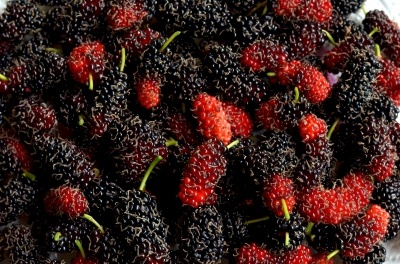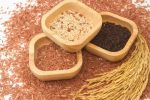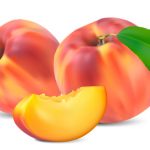
Mulberries are often seen on small trees in parks and gardens. If you are lucky enough you may see them growing on wild mountain passes. If you see the fruit, try them as they have a wonderful sweetness. Beware though, they will soon stain any clothing with their delicious dark red juice if you are too clumsy in eating them.
The Mulberry is the fruit of Morus alba L., and what a highly delicious fruit it is. It sits in the family, Moraceae. It originally came from China but because the mulberry leaf is the food source of the silk moth. Because of this association with silk, the tree was soon being grown throughout the silk trail. It is now often found throughout Europe too and is often a seen in cultivated gardens as a stand alone specimen. Charlecote Park in the UK has a particularly fine example.
Morus alba is one of 24 species along with one subspecies. There are a few more which are worth cultivating for their fruit alone.
The fruit is lauded and praised for its exceptional medicinal properties (Lim et al., 2013; You et al., 2015; Jao et al., 2016). However, the fruit is not the only part of the plant which has been used in traditional medicines. The leaves, roots and stems have all been used. It is highly regarded in many Asian countries.
Mulberry In Obesity And Diabetes Management
Diabetes and obesity are both problematic conditions for many people. Mulberry leaves have been found to reduce the glucose concentration in the blood of rats with diabetes (Andallu & Varadacharyulu, 2003). This is an illustration of the leaf’s potential for a antihyperglycaemic effect. This benefit has also been discussed in relation to mulberry tea because the dried leaves have a high antioxidant content in their own right (Hansawasdi & Kawabata, 2006; Banu et al., 2015). We’ve known about these health properties of the tea for millenia.
In 2016 a research paper was published that discussed a number of other conditions that could be controlled by compounds in the leaves such as their antioxidant role along with their ability to suppress inflammation, to help control if not prevent obesity and regulate those stress markers associated with obesity (Lim et al., 2013; Król et al., 2016).
Nonalcoholic fatty acid liver disease is a common complication of obesity. The leaves can help in reducing the production of excessive fat by the liver (hepatic lipogenesis) and the damaging effects of fibrosis (Ann et al., 2015).
Likewise, the fruit too has antidiabetic properties. The anthocyanins (the coloured pigments) in the fruit can minimise resistance to insulin and improve this dysfunction in diabetic mice (Yan et al., 2016; Yan & Zheng, 2017). An ethanolic extract of mulberry fruit, also protects mice from high-fat diet-induced obesity, liver steatosis (fatty liver) and reduced insulin resistance as in type-2 diabetes (Song et al., 2016).
Drinking mulberry juice as well as blueberry juice was demonstrated to regulate obesity in mice (Wu et al., 2013). A clinical trial similar to those conducted with the tea is needed to demonstrate if this benefit is replicated.
Mulberry Leaf And Blood Pressure
One of the consequences of diabetes is hypertension. A study with diabetic rats showed that the mulberry leaf could reduce arterial blood pressure which implies it could also help bring blood pressure under control (Naowaboot et al., 2009).
Nutritional Value Of Mulberry
The fruit is rich in a variety of nutrients. It is a good sources of anthocyanins which are responsible for its vibrant dark red colour, the flavonoids and polyphenols (Song et al., 2016). All these compounds contribute to its high antioxidant activity
Unfortunately, it has a high water content and thin skin, which means it is highly perishable and difficult to store. They are not often available as raw fruit. As a result, mulberries are frequently found processed (Ercisli et al., 2007; Tarko et al., 2014).
Whilst the fruit of the mulberry has exceptional value, the leaves are most often found in healthfood retailers where you can purchase them as tea. Mulberry tea has long been valued for its efficacy especially in helping to manage diabetes.
The root bark yields some interesting compounds including mulberrofuran G, albanol B, and kuwanon G (Paudel et al., 2018). These compounds inhibit various enzymes associated with metabolism especially those involved in sugar use by cells. This effect was demonstrated in diabetic mice where their blood glucose levels were reduced (Liu et al., 2014).
Mulberry Wine
Mulberry wine is made from 100% fresh mulberry fruit juice by yeast fermentation. In addition to containing many nutrients, such as amino acids, vitamins, and minerals, mulberry wine also contains a comprehensive variety of bioactive substances, including organic acid, polyphenols, especially, anthocyanins and resveratrol (Wang et al., 2015; You et al., 2015).
Colour is an essential component of its appeal and can greatly influence consumers’ decision to purchase, but it is extremely unstable in processing and aging (Han et al., 2017).
References
, & (2003). Antioxidant role of mulberry (Morus indica L. cv. Anantha) leaves in streptozotocin‐diabetic rats. Clinica Chimica Acta, 338(1–2), pp. 3–10. https://doi.org/10.1016/S0009-8981(03)00322-X
, , & (2015). Mulberry leaves (Morus alba L.) ameliorate obesity‐ induced hepatic lipogenesis, fibrosis, and oxidative stress in high‐fat diet‐fed mice. Genes & Nutrition, 10(6), pp. 46–58. https://doi.org/10.1007/s12263-015-0495-x
, , , , , , & (2015). Reduction of post‐prandial hyperglycemia by mulberry tea in type‐2 diabetes patients. Saudi Journal of Biological Sciences, 22(1), pp. 32–36. https://doi.org/10.1016/j.sjbs.2014.04.005
Ercisli, S., & Orhan, E. (2007). Chemical composition of white (Morus alba), red (Morus rubra), and black (Morus nigra) mulberry fruits. Food Chemistry, 103, pp. 1380–1384
Han, Q., Gao, H., Chen, H., Fang, X., & Wu, W. (2017). Precooling and ozone treatments affects postharvest quality of black mulberry (Morus nigra) fruits. Food Chemistry, 221, pp. 1947–1953 https://www.sciencedirect.com/science/article/pii/S0308814616320015?via%3Dihub
, & (2006). α–Glucosidase inhibitory effect of mulberry (Morus alba) leaves on Caco‐2. Fitoterapia, 77(7–8), pp. 568–573. https://doi.org/10.1016/j.fitote.2006.09.003
Jao, H., Hsu, J. D., Lee, Y. R., Lo, C., & Lee, H. J. (2016). Mulberry water extract regulates the osteoblast/osteoclast balance in an ovariectomic rat model. Food & Function, 7, pp. 4753–4763 http://pubs.rsc.org/en/Content/ArticleLanding/2016/FO/C6FO00852F#!divAbstract
, , , , & (2016). The effects of supplementary mulberry leaf (Morus alba) extracts on the trace element status (Fe, Zn and Cu) in relation to diabetes management and antioxidant indices in diabetic rats. Biological Trace Element Research, 174(1), pp. 158–165. https://doi.org/10.1007/s12011-016-0696-1
, , , , & (2013). Combined treatment of mulberry leaf and fruit extract ameliorates obesity‐related inflammation and oxidative stress in high fat diet‐induced obese mice. Journal of Medicinal Food, 16(8), 673–680. https://doi.org/10.1089/jmf.2012.2582
, , , & (2016). Mulberry ethanol extract attenuates hepatic steatosis and insulin resistance in high‐fat diet‐fed mice. Nutrition Research, 36(7), pp. 710–718. https://doi.org/10.1016/j.nutres.2016.01.011
Tarko, T., Duda‐Chodak, A., Satora, P., Sroka, P., Pogoń, P., & Machalica, J. (2014). Chaenomeles japonica, Cornus mas, Morus nigra fruits characteristics and their processing potential. Journal of Food Science and Technology, 51, pp. 3934–394 https://link.springer.com/article/10.1007%2Fs13197-013-0963-5
, , & (2016). Mulberry anthocyanin extract ameliorates insulin resistance by regulating PI3K/AKT pathway in HepG2 cells and db/db mice. The Journal of Nutritional Biochemistry, 36, pp. 68–80. https://doi.org/10.1016/j.jnutbio.2016.07.004
Y, & (2017). Anthocyanin‐rich mulberry fruit improves insulin resistance and protects hepatocytes against oxidative stress during hyperglycemia by regulating AMPK/ACC/mTOR pathway. Journal of Functional Foods, 30, pp. 270–281. https://doi.org/10.1016/j.jnutbio.2016.07.004
You, Y., Yuan, X., Lee, H. J., Huang, W., Jin, W., & Zhan, J. (2015). Mulberry and mulberry wine extract increase the number of mitochondria during brown adipogenesis. Food & Function, 6, pp. 401–408. http://pubs.rsc.org/en/Content/ArticleLanding/2015/FO/C4FO00719K#!divAbstract
Wang, L., Sun, X., Li, F., Yu, D., Liu, X., Huang, W., & Zhan, J. (2015). Dynamic changes in phenolic compounds, colour and antioxidant activity of mulberry wine during alcoholic fermentation. Journal of Functional Foods, 18, pp. 254–265. https://www.sciencedirect.com/science/article/pii/S1756464615003710?via%3Dihub
Wu, T., Tang, Q., Gao, Z., Yu, Z., Song, H., Zheng, X., & Chen, W. (2013). Blueberry and mulberry juice prevent obesity development in C57BL/6 mice. PLoS One, 8(10), e77585. https://doi.org/10.1371/journal.pone.0077585



These are great in muesli. I would say they are better than blueberries and cranberries in breakfast cereals. Really interesting idea for a breakfast cereal – think about it !